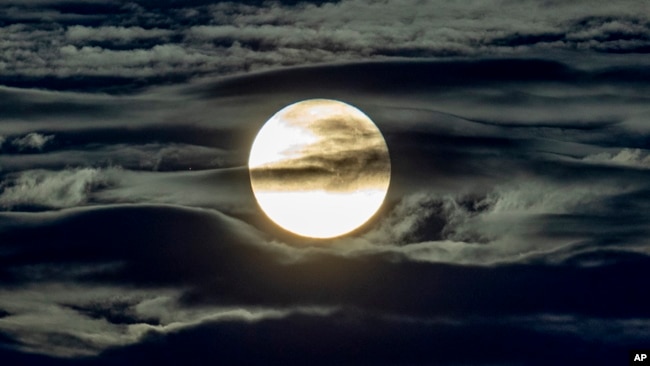怖いですね~!!
それでも、行くのですね~!!
月面基地を起点として、火星への輸送計画なのですね~!!
火星への人類が脚を伸ばす足がかりなのですね~!!
地球をしてる日、あなたはどこに誰といるのでしょう???
月の抵抗、放射線!!!
VOAニュース、Let's get started!!
月の新しい測定結果から有害な放射線レベルが判明
New Measurements on the Moon Show Harmful Radiation Levels
October 04, 2020
新しい測定値は、月の放射線レベルが国際宇宙ステーションよりも2〜3倍高いことを示しています。
測定は、中国のChang’e-4嫦娥4号月着陸船に搭載された機器によって行われ、宇宙船は2019年1月に月の裏側に着陸しました。
実験に関与したドイツと中国の科学者は、中国の着陸機が月面の放射線レベルの最初の”アクティブ”な測定値を提供したと述べています。調査結果は最近、出版物 Science Advances の研究で報告されました。
この研究は、米国や他のいくつかの国が、月探査のために宇宙飛行士を送る計画を開発していることに由来しています。アメリカの宇宙機関 NASA は、そのアルテミス プログラムの一環として 2024 年までに月に最初の女性と次の男性を着陸させるという目標を持っています。また、2028年までに月に長期的な基地を設置したいと考えています。
しかし、宇宙放射線は将来の宇宙飛行士に大きな健康リスクをもたらします。癌が主な健康上の懸念ですが、放射線被曝はまた、他の病気につながる可能性があります。
NASAはすでに、月や火星のような場所で長期間を過ごす宇宙旅行者は、高レベルの有害な放射線に直面するだろうと警告しています。
地球の大気と磁気シールドは、宇宙に存在する極端な放射線から人間を守っています。しかし、国際宇宙ステーションに搭乗する宇宙飛行士は、私たちが地球で受ける放射線よりも高いレベルの放射線を受けるのです。
新しい研究では、月面での放射線被曝は、国際宇宙ステーションよりも2.6倍高くなることが示唆されています。研究者は、月面の宇宙飛行士は、私たちが地球上で経験する放射線の約200倍以上の放射線を受けるだろうと述べています。
ロバート ヴイマー・シュヴァイングルーバー 氏は、ドイツのキール大学の宇宙物理学者で、研究をリードしています。彼がフランスの報道機関、AFPに語ったところによると、この発見により、彼のチームは、宇宙飛行士が月に滞在できるのは、現在の状況では約2ヶ月間だけであると予測したということです。
「人間は本当にこれらの放射線レベルのために作られていないし、月では自分自身を保護する必要があります」とヴイマー・シュヴァイングルーバー 氏は述べています。
彼は、放射線レベルは深いクレーターの壁の近くを除いて、月のすべての領域でほとんど同じであるべきだろうと付け加えています。「基本的には、空を見ることが少なければ少ないほど良いのです」と彼は言います。
研究者は、宇宙飛行士が数日以上の滞在中に保護のための月の土で作られたシェルターを構築することができることを提案しました。彼らは、シェルターの壁は、少なくとも約80センチの厚さである必要があるだろうと述べています。それよりも厚い壁は土が独自の二次放射線を放出する原因になる可能性があります。このような放射線は、月の土と宇宙線が相互作用することで発生する、と彼らが言います。
NASA は、放射線検出器と安全なシェルターを月に飛行するすべての乗組員宇宙船に搭載すると述べています。
トーマス・ベルガー氏は、ドイツ宇宙機関の医学研究所の物理学者です。彼もこの研究に参加しました。彼は実験の結果を "非常に貴重"だと言っています。この方法は、放射線を効果的に測定し、人間への影響を研究するために使用することができる”データセット”を最終に科学者にもたらしてくれる、とベルガー氏は言います。
この研究で示された放射線レベルは、モデルがすでに予測していたレベルと類似しています。ケリー・リー氏は、ヒューストンにあるNASAジョンソン宇宙センターの宇宙放射線専門家です。リー氏は、測定値は10 年以上の月を周回している NASA の軌道上の検出器によって作られたものと”ほぼ正確に一致する”と述べています。
「私たちが考えていることが確認され、放射線が月とどのように相互作用するかについての私たちの理解が予想通りであることを見ることができてうれしいです」とリーは語っています。
アルテミス計画
NASAが計画している壮大な有人月活動のことで、ギリシャ神話で登場する月の女神にちなんで名付けられています。
New Measurements on the Moon Show Harmful Radiation Levels
 The full moon shines surrounded by clouds in the outskirts of Frankfurt, Germany, early Wednesday, Sept. 2, 2020.
The full moon shines surrounded by clouds in the outskirts of Frankfurt, Germany, early Wednesday, Sept. 2, 2020.
New measurements show that radiation levels on the moon are two to three times higher than on the International Space Station.
The measurements were taken by an instrument on China’s Chang’e-4 lunar lander. The spacecraft touched down on the far side of the moon in January of 2019.
German and Chinese scientists involved in the experiment say the Chinese lander provided the first “active” measurements of radiation levels on the surface of the moon. The findings were recently reported in a study in the publication Science Advances.
The study comes as the United States and several other countries develop plans to send astronauts to explore the moon. The American space agency NASA has a goal of landing the first woman and next man on the moon by 2024 as part of its Artemis program. It also wants to set up a long-term base on the moon by 2028.
But space radiation presents major health risks to future astronauts. Cancer is the main health concern, but radiation exposure can also lead to other diseases.
NASA has already warned that space travelers spending long periods in places like the moon or Mars will face high levels of harmful radiation.
Earth’s atmosphere and magnetic shield protect humans from the extreme radiation present in the universe. But astronauts aboard the International Space Station receive higher levels of radiation that we receive on Earth.
The new study suggests that radiation exposure on the moon would be 2.6 higher than on the International Space Station. The researchers said astronauts on the moon would get about 200 times more radiation than we experience on Earth.
Robert Wimmer-Schweingruber is an astrophysicist at the University of Kiel in Germany. He helped lead the research. He told the French press agency, AFP, the finding led his team to predict that astronauts would only be able to stay on the moon for about two months under current conditions.
“Humans are not really made for these radiation levels and should protect themselves when on the moon,” Wimmer-Schweingruber said.
He added that radiation levels should be about the same in all areas of the moon, except for near the walls of deep craters. “Basically, the less you see of the sky, the better,” he said.
The researchers suggested that astronauts could build shelters made of moon dirt for protection during stays of more than a few days. They said the shelters’ walls would need to be about least 80 centimeters thick. A wall thicker than that, they said, could cause the dirt to give off its own secondary radiation. Such radiation is created when cosmic rays interact with the lunar soil.
NASA has said it will have radiation detectors and a safe shelter on all of its crew spacecraft flying to the moon.
Thomas Berger is a physicist with the German Space Agency’s medicine institute. He also took part in the study. He called results of the experiment “immense.” The method finally gives scientists a “data set” that can be used to effectively measure radiation and study its effects on humans, Berger said.
The radiation levels described in the study are similar to levels that models have already predicted. Kerry Lee is a space radiation expert at NASA’s Johnson Space Center in Houston. Lee said the measurements “agree nearly exactly” with those made by a detector on a NASA orbiter that has been circling the moon for more than 10 years.
“It is nice to see confirmation of what we think, and that our understanding of how radiation interacts with the moon, is as expected,” Lee said.
_______________________________________________________________
Words in This Story
exposure – n. coming in contact with something
shield – n. an object used to protect something
crater – n. a large round hole in the ground made by the explosion of a bomb or by something falling from the sky
cosmic ray – n. high-energy particles that move through space at nearly the speed of light
detector – n. a device that helps notice something that is hidden or unclear
immense – adj. extremely good
interact – v. to communicate with or react to